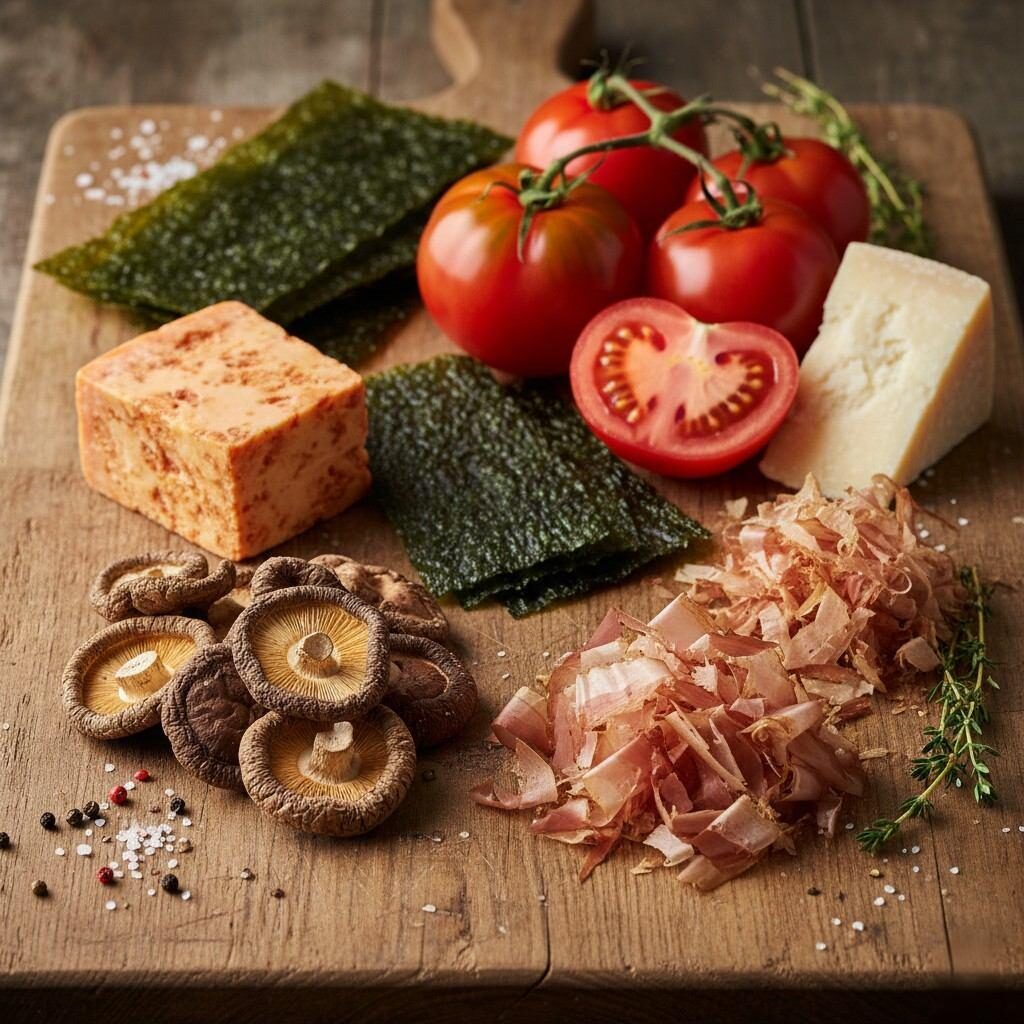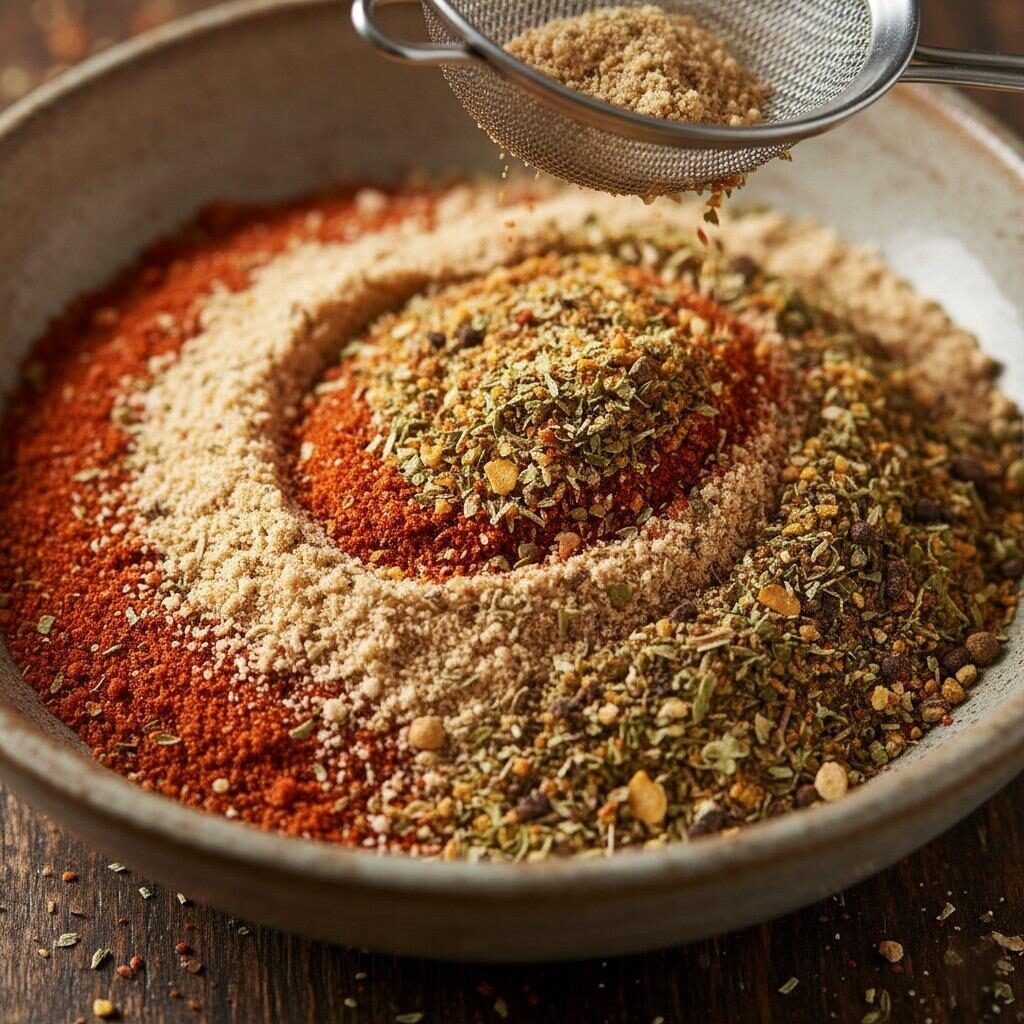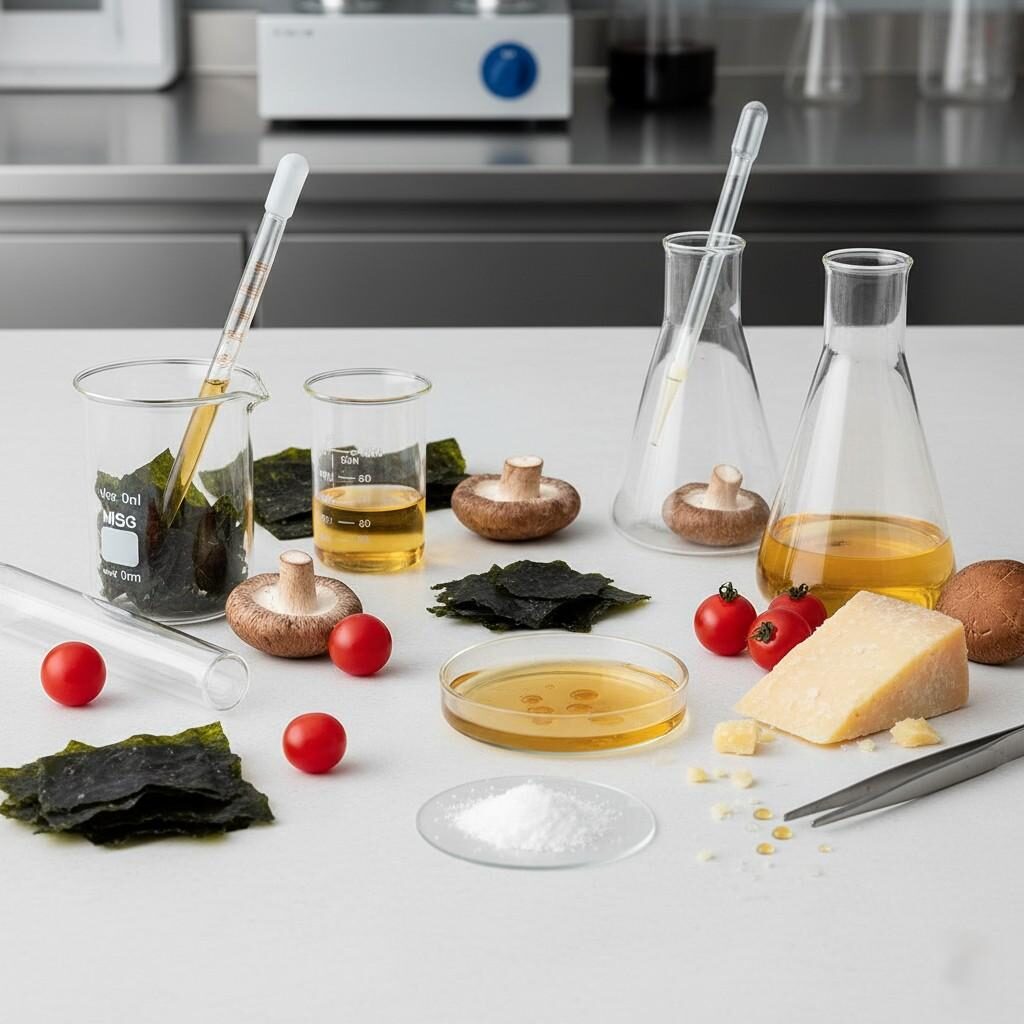Author: R&D Team, CUIGUAI Flavoring
Published by: Guangdong Unique Flavor Co., Ltd.
Last Updated: Nov 18, 2025

Umami Ingredients Board
In the global food and beverage industry, the demand for savory depth, authentic taste, and “clean-label” formulation continues to rise. Consumers increasingly associate food quality with naturalness, minimal processing, and recognizable ingredients. As a result, formulators are actively searching for strategies to enhance savory flavor without relying exclusively on monosodium glutamate (MSG).
Although MSG remains a safe, effective, and economical flavor enhancer, the modern market requires diversified solutions. Many brands want products that deliver multi-layered umami, improved mouthfeel, and a stronger perception of “naturalness.” This shift opens the door to a wide range of natural umami-rich compounds and ingredients—from yeast extracts to nucleotides, fermented plant protein hydrolysates, mushroom concentrates, tomato derivatives, and more.
This comprehensive 3,000+ word guide provides food scientists, R&D teams, and product developers with a deep technical understanding of:
With an evidence-based, technical, and practical approach, this article is designed for publication on a corporate website and optimized for Google’s search intent related to natural umami solutions, flavor design, and savory product development.
Umami is recognized as the fifth basic taste, alongside sweetness, sourness, saltiness, and bitterness. It was first identified in 1908 by Japanese chemist Kikunae Ikeda, who extracted glutamic acid from kombu broth. Umami is characterized by a round, mouth-coating satisfaction and a lingering savory depth.
The umami sensation comes from glutamates and certain nucleotides, mainly:
Free glutamate binds to taste receptors T1R1/T1R3, triggering a savory perception.
Research confirms that when glutamate is combined with nucleotides (IMP/GMP), the perceived umami effect increases significantly—more than the sum of each component individually.
This is known as umami synergy.
Common foods naturally rich in glutamate include:
According to academic sources, free glutamate levels in Parmesan cheese can exceed 1,200 mg/100 g, similar to kombu¹.
¹ Source: Wikipedia – “Umami” (publicly available information)
Before we explore natural options, it is essential to address MSG’s role. Scientific consensus—including the U.S. FDA—confirms that MSG is safe for consumption².
² Source: U.S. Food & Drug Administration (FDA) – “Monosodium Glutamate (MSG): Questions and Answers”
However, consumers often express concerns about additives they perceive as “chemical.” This has led many brands to pursue:
Therefore, natural umami-enhancing ingredients provide an opportunity to satisfy both regulatory requirements and consumer expectations.
In the last decade, natural umami enhancers have become essential in:
Industry research shows that over 60% of consumers prefer products with natural flavor enhancers, especially for savory items³.
³ Source: Innova Market Insights – Global Flavor Trends Report (industry research)
This section examines each major category of natural flavor enhancers, providing functional characteristics, sensory benefits, and application considerations.
This section forms the technical core of the article and analyzes the most widely used natural umami enhancers.
Yeast extracts are among the most effective natural alternatives to MSG.
They contain:
Often declared as “yeast extract” or “natural flavor”, aligning well with clean-label expectations.
Mushrooms—including shiitake, porcini, and maitake—naturally contain high levels of glutamates and guanylate.
Seaweed is a traditional umami source, particularly in Japanese cuisine.
Kombu, for example, contains extremely high glutamate content—over 2,200 mg/100 g of dried weight.

Savory Snack Seasoning Mix
Tomatoes contain both glutamates and complex aroma volatiles.
These are produced by breaking down plant proteins such as soy, wheat, corn, or pea.
Acid-hydrolyzed HVP has regulatory restrictions in some markets, but enzymatically hydrolyzed vegetable proteins (EVP) offer a clean-label alternative.
Traditional fermentation naturally liberates glutamates.
Examples include:
These products bring layers of umami, salt, and aroma volatiles.
For non-vegan applications, concentrated broths provide unmatched authenticity.
Includes:
These deliver a complex mixture of glutamates, nucleotides, and meaty aroma compounds.
Some yeast extracts can be fortified or naturally enriched with nucleotides.
Nucleotides dramatically amplify glutamate perception—sometimes up to twice the potency of MSG alone⁴.
⁴ Source: Journal of Food Science – Studies on the synergy between glutamate and nucleotides (professional journal)
Beyond simply increasing savoriness, natural umami enhancers contribute to multiple sensory dimensions:
Umami compounds stimulate salivation, which increases perceived richness.
Umami can compensate for reduced sodium formulations.
Particularly useful for:
Many natural umami sources also supply volatile aroma compounds.
Examples:
Acidic environments can enhance glutamate perception.
Overheating can degrade delicate nucleotides—especially GMP.
Aromatic depth amplifies umami perception further.
Natural umami enhancers solve several issues:
Recommended enhancers:
Umami enhancers strengthen flavor stability during cooking.
Applications:
Umami is essential for:
Natural enhancers increase impact while controlling sodium content.

Umami Broth Pot
These products need:
Natural umami systems are widely used in bouillon cubes, liquid broths, and ready-to-eat soups.
Umami enhancers:
Common in:
Different markets may categorize natural enhancers differently.
General guidelines:
Global regulatory bodies (FDA, EFSA, Codex Alimentarius) continue to review flavor ingredients, and natural alternatives typically face fewer restrictions.
Biotechnological advances allow precise production of natural glutamates and nucleotides.
Specialty mushrooms such as lion’s mane and porcini bring unique savory aromatic profiles.
Algae, kelp, and fermented plant proteins can simulate seafood richness.
AI-driven formulation optimizes umami synergy for:
Natural umami enhancers offer a powerful, flexible, and consumer-friendly alternative to conventional MSG. Whether the goal is clean-label reformulation, complex savory depth, plant-based taste optimization, or reduced salt content, nature provides a wide range of effective solutions.
By strategically combining yeast extracts, mushroom concentrates, tomato derivatives, seaweed extracts, fermented sauces, and protein hydrolysates, formulators can create satisfying, multilayered umami systems that meet modern consumer expectations for natural, delicious, and innovative savory foods.

Umami Science & Nature
If you are developing savory products and want to explore custom natural umami solutions, clean-label savory enhancers, or application-specific flavor systems, our technical team can help.
👉 Contact us for technical consultation or request free professional flavor samples.
We support R&D teams with tailored formulation guidance and rapid prototyping.
📧 Email: [info@cuiguai.com]
🌐 Website: [www.cuiguai.cn]
📱 WhatsApp: [+86 189 2926 7983]
☎ Phone: [+86 0769 8838 0789]
Copyright © 2025 Guangdong Unique Flavor Co., Ltd. All Rights Reserved.